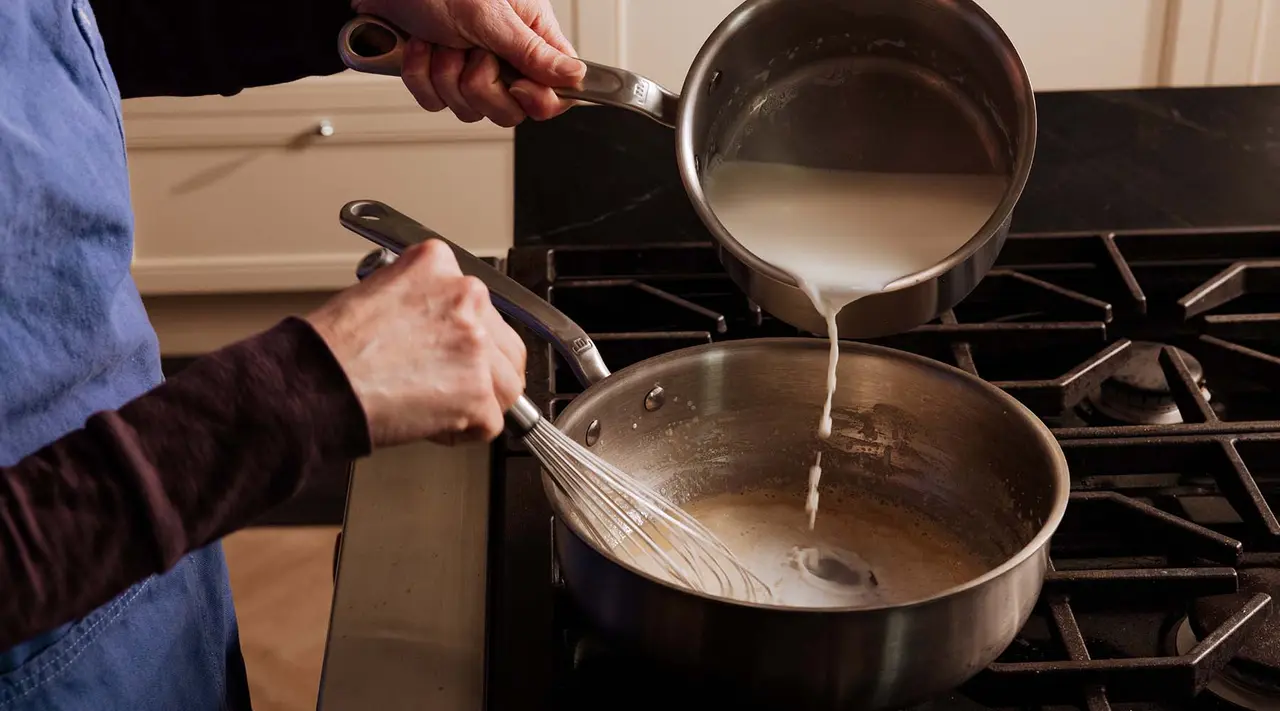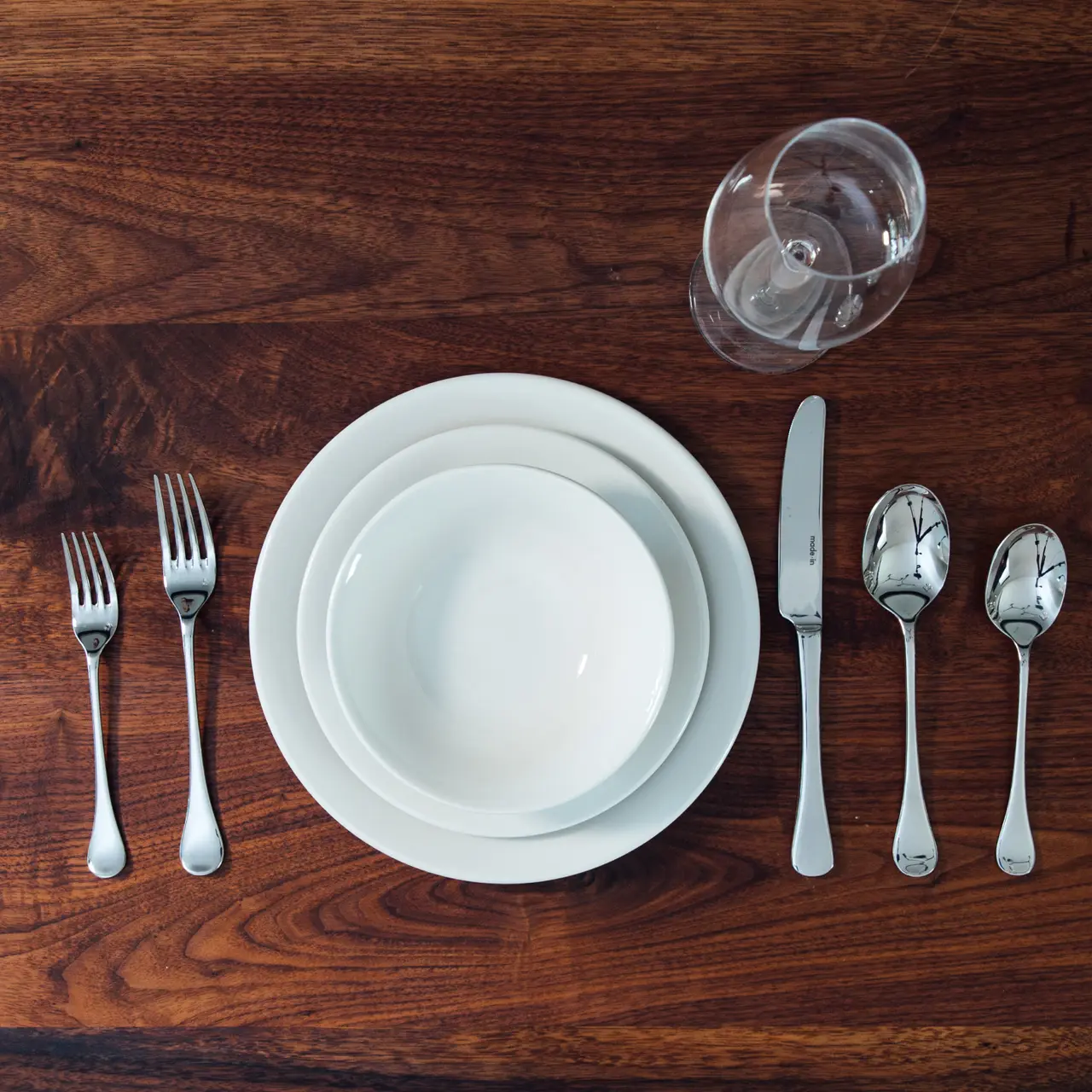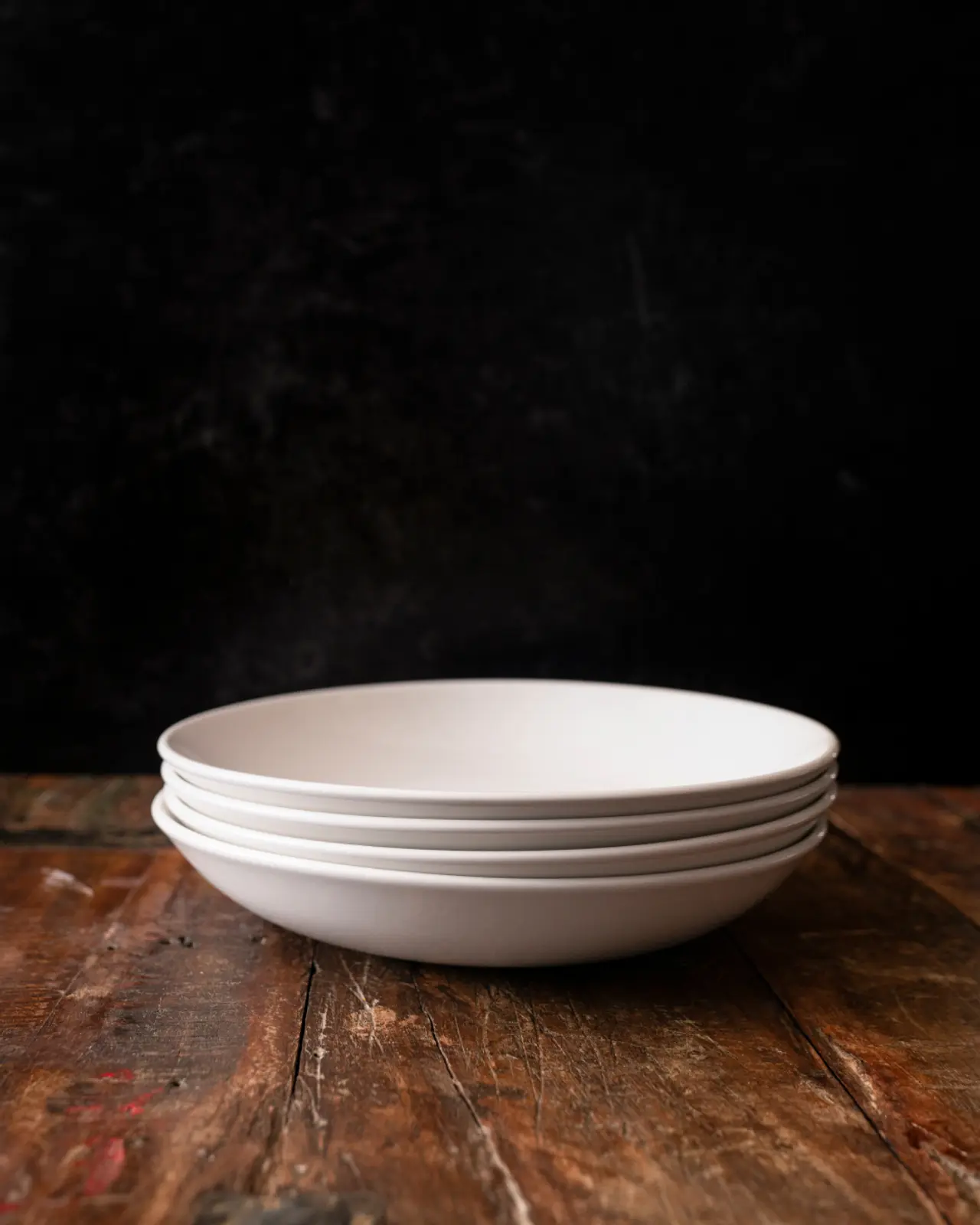When you’re building a bolognese or assembling the filling for a chicken pot pie, you’re actually following centuries of French culinary tradition. First identified by Chef Marie-Antoine Carême in the early 19th century and later indexed by Chef Auguste Escoffier in 1903’s Le Guide Culinaire, the five French “mother sauces” serve as the foundation for all others: Béchamel, espagnole, hollandaise, tomato, and velouté. Perfecting these is often the first skill set young cooks must master, whether on the line or in culinary school—which includes ensuring they’re technically perfect, with no splitting, lumps, or skin.
While home cooks are often less particular about their sauces, learning about them (including how to get them right) can level up your cooking skills in more ways than one—these five sauces are the foundation for hundreds of derivatives, and have been widely adopted by other cuisines. And if nothing else, then for humble bragging rights.
Here’s what you need to know about the five mother sauces, as well as some tips for creating them at home, even if they’re not technically perfect.
Béchamel
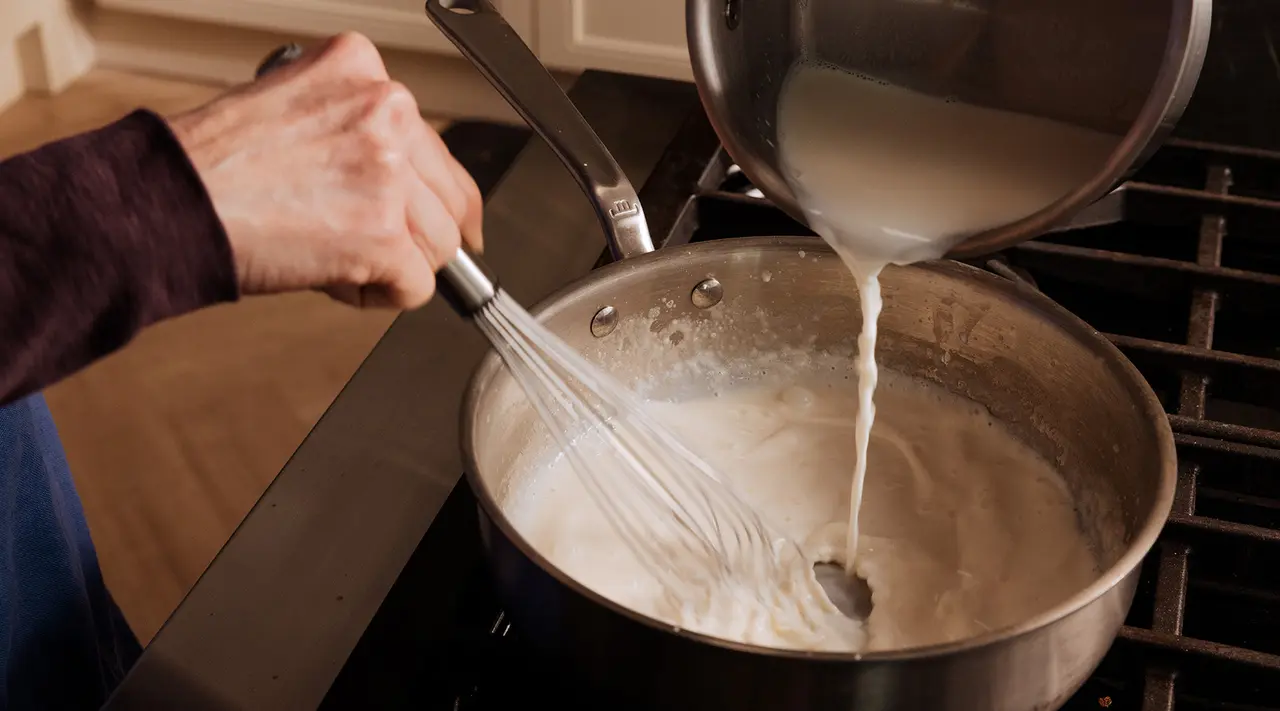
Sometimes called “white sauce,” béchamel is made by cooking butter and flour together to make a white roux, then adding milk (or less traditionally, cream) and a few seasonings. Named after the Marquis de Béchamel, this white, creamy sauce is understated and subtle, perfect on its own but more frequently used as a base for other sauces.
Béchamel is one of those sauces you’ve likely made a version of without knowing its technical name or history. Since it works beautifully as a base for cheesy dishes, it’s often the base for recipes like lasagna, mac and cheese, or croque monsieurs. A Saucier is great to have on hand for all sauces, but especially this one—rounded edges ensure all parts of the sauce are constantly whisked.
Tip: Béchamel is always easier to thin than it is to thicken, so we recommend making your sauce slightly thicker than necessary with extra flour and thinning it with milk as needed.
Espagnole
Known colloquially as simply “brown sauce,” espagnole is made with beef stock, brown roux, mirepoix (a uniform mixture of celery, carrots, and onions), and tomato, most commonly in purée or paste form.
The result is a concentrated sauce that is most commonly used to make demi glace or served over red meat. While it can stand on its own, it benefits greatly from the addition of red wine and herbs to coax out a richer flavor. A 4QT Saucepan is a helpful tool for building the base, as well as additional flavors.
Hollandaise

Originally called Sauce Isigny, hollandaise was renamed during World War II when cooks started importing butter for the sauce from Holland. Hollandaise sauce is composed simply of egg yolks, butter, and lemon juice—the butter for this sauce must be clarified (a stovetop process for removing water and milk solids) or the sauce is more likely to split.
Making hollandaise sauce can be difficult for beginners because the mixture must be tempered, which means hot liquid and eggs must be combined without the eggs becoming scrambled. The trick is to stir the sauce at the same speed constantly throughout the process.
The result is a tangy, thick sauce that is most commonly used over eggs Benedict, poached fish, or vegetables like asparagus, but lends itself nicely to red meat. A Stainless Clad Butter Warmer helps bring the flavors of this together, especially for a small batch.
Tomato
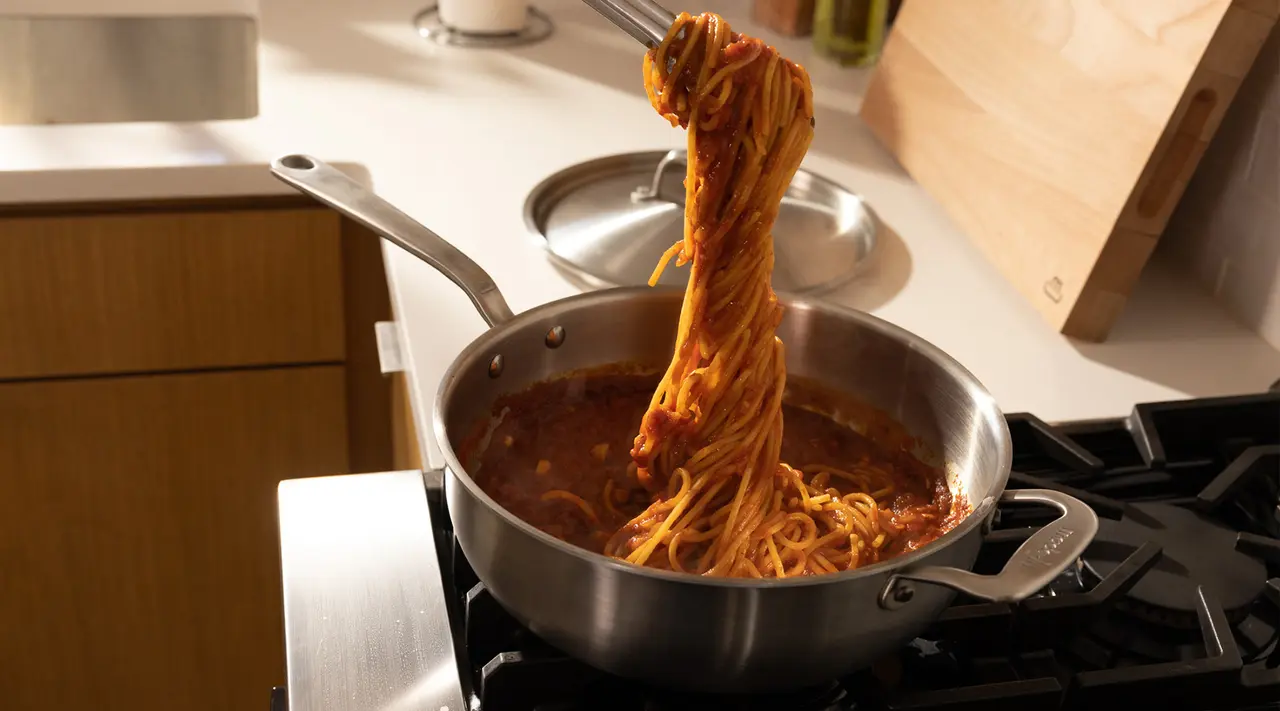
Tomato sauce (or sauce tomat) is the one home cooks are usually the most familiar with. At its most basic, tomato sauce is a reduction (or the process of evaporating moisture from a liquid over low heat) of finely diced tomatoes, onions, garlic, salt, and pepper. The official recipe begins by rendering pork fat to saute carrots, onions, and aromatics. Like the other leading sauces, flour is added as a thickener. Sauce tomat is finished with tomato, light stock, butter, and seasonings before being left to reduce and develop flavor.
Tomato sauce is the least delicate of all the mother sauces, and the one you can add nearly anything to without worry of it breaking. Once the basic recipe is put together, there’s plenty of room to experiment—with the addition of other ingredients and seasonings, you can take your tomato sauce base in any direction, from a mild marinara to a spicy arrabbiata.
Tomato sauce can be used in a variety of different ways depending on what flavor profile you add to the base. Most commonly found over pasta or on pizza, we also love tomato sauce in shakshuka or as the base for tomato soup. A Rondeau is a great tool to make this in, with plenty of room to experiment with additional flavors.
Tip: If the sauce reduces too much while making a reduction, add more tomatoes or a little broth to rehydrate.
Velouté
Derived from the French word for velvet, this silky sauce is a mixture of flour and a light stock made from fish, veal, chicken, or vegetables, and is very similar in both texture and composition to béchamel. In fact, when made with vegetable broth, this sauce is the vegan version of béchamel and can be used in many of the same dishes.
Once the roux and stock have been combined, the sauce should simmer on low heat for about half an hour before it’s served, both to reduce the liquid and make the sauce thicker. When finished, velouté should be nappe consistency—or just thick enough to evenly coat the back of a spoon.
Like béchamel, many home cooks have made velouté without knowing it. Velouté is the starting point for most gravies, and though good on its own, this is one sauce that benefits from the addition of other ingredients that give it additional flavor—even basics like salt, pepper, garlic, or sage. Since you're working with stock, a Stainless Clad Stock Pot gives you plenty of room to build the roux, add your stock, and add the additional flavors necessary for gravy.
Tip: When making a roux, stir together the fat and flour over moderate heat to keep the flour from burning.
Ready to Cook?
Whether you’re making a variation of one of the mother sauces or a new creation altogether, proper cookware can make a difference. Sauces benefit from a pot that allows for easy, constant whisking over low heat to prevent keep your sauce from splitting, which is why we recommend reaching for a Stainless Clad tool to ensure even heat distribution touching all parts of your sauce.
